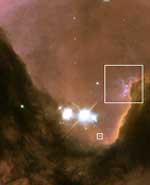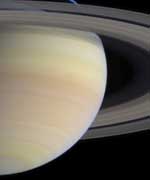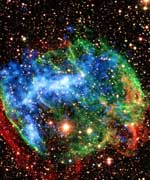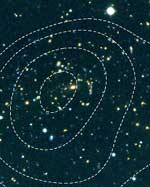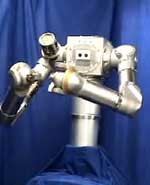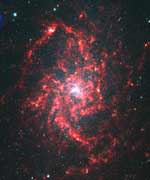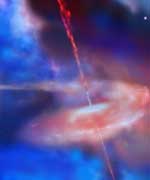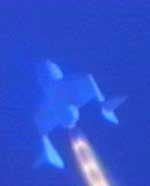
Image credit: Scaled
A privately-developed rocket plane will launch into history on June 21 on a mission to become the world?s first commercial manned space vehicle. Investor and philanthropist Paul G. Allen and aviation legend Burt Rutan have teamed to create the program, which will attempt the first non-governmental flight to leave the earth?s atmosphere.
SpaceShipOne will rocket to 100 kilometers (62 miles) into sub-orbital space above the Mojave Civilian Aerospace Test Center, a commercial airport in the California desert. If successful, it will demonstrate that the space frontier is finally open to private enterprise. This event could be the breakthrough that will enable space access for future generations.
Allen, founder and chairman of Vulcan Inc, is financing the project. Along with Allen, Vulcan?s technology research and development team — which takes the lead in developing high impact science and technology projects for Allen — has been active in the project?s development and management.
“This flight is one of the most exciting and challenging activities taking place in the fields of aviation and aerospace today,” said Paul G. Allen, sole sponsor in the SpaceShipOne program. “Every time SpaceShipOne flies we demonstrate that relatively modest amounts of private funding can significantly increase the boundaries of commercial space technology. Burt Rutan and his team at Scaled Composites have accomplished amazing things by conducting the first mission of this kind without any government backing.”
Today?s announcement came after SpaceShipOne completed a May 13th, 2004 test flight in which pilot Mike Melvill reached a height of 211,400 feet (approximately 40 miles), the highest altitude ever reached by a non-government aerospace program.
Sub-orbital space flight refers to a mission that flies out of the atmosphere but does not reach the speeds needed to sustain continuous orbiting of the earth. The view from a sub-orbital flight is similar to being in orbit, but the cost and risks are far less.
The pilot (to be announced at a later date) of the up-coming June sub-orbital space flight will become the first person to earn astronaut wings in a non-government sponsored vehicle, and the first private civilian to fly a spaceship out of the atmosphere.
?Since Yuri Gagarin and Al Shepard?s epic flights in 1961, all space missions have been flown only under large, expensive Government efforts. By contrast, our program involves a few, dedicated individuals who are focused entirely on making spaceflight affordable,? said Burt Rutan. ?Without the entrepreneur approach, space access would continue to be out of reach for ordinary citizens. The SpaceShipOne flights will change all that and encourage others to usher in a new, low-cost era in space travel.?
SpaceShipOne was designed by Rutan and his research team at the California-based aerospace company, Scaled Composites. Rutan made aviation news in 1986 by developing the Voyager, the only aircraft to fly non-stop around the world without refueling.
?To succeed takes more than the work of designers and builders?, Rutan said, ?The vision, the will, the commitment and the courage to direct the program is the most difficult hurdle. We are very fortunate to have the financial support and the confidence of a visionary like Paul Allen to make this effort possible.?
To reach space, a carrier aircraft, the White Knight, lifts SpaceShipOne from the runway. An hour later, after climbing to approximately 50,000 feet altitude just east of Mojave, the White Knight releases the spaceship into a glide. The spaceship pilot then fires his rocket motor for about 80 seconds, reaching Mach 3 in a vertical climb. During the pull-up and climb, the pilot encounters G-forces three to four times the gravity of the earth.
SpaceShipOne then coasts up to its goal height of 100 km (62 miles) before falling back to earth. The pilot experiences a weightless environment for more than three minutes and, like orbital space travelers, sees the black sky and the thin blue atmospheric line on the horizon. The pilot (actually a new astronaut!) then configures the craft?s wing and tail into a high-drag configuration. This provides a ?care-free? atmospheric entry by slowing the spaceship in the upper atmosphere and automatically aligning it along the flight path. Upon re-entry, the pilot reconfigures the ship back to a normal glider, and then spends 15 to 20 minutes gliding back to earth, touching down like an airplane on the same runway from which he took off. The June flight will be flown solo, but SpaceShipOne is equipped with three seats and is designed for missions that include pilot and two passengers.
Unlike any previous manned space mission, the June flight will allow the public to view, up close, the takeoff and landing as well as the overhead rocket boost to space. This will be an historic and unique spectator opportunity. Information for the general public on attending the event is available at www.scaled.com.
Based on the success of the June space flight attempt, SpaceShipOne will later compete for the Ansari X Prize, an international competition to create a reusable aircraft that can launch three passengers into sub-orbital space, return them safely home, then repeat the launch within two weeks with the same vehicle.
The Discovery Channel and Vulcan Productions are producing RUTAN?S RACE FOR SPACE (wt), a world premiere television special that documents the entire process of the historic effort to create the first privately-funded spacecraft. From design to flight testing to the moments of the actual launch and return, the special takes viewers behind-the-scenes for the complete, inside story of this historic aerospace milestone. RUTAN?S RACE FOR SPACE will be broadcast later this year.
Original Source: Scaled News Release


